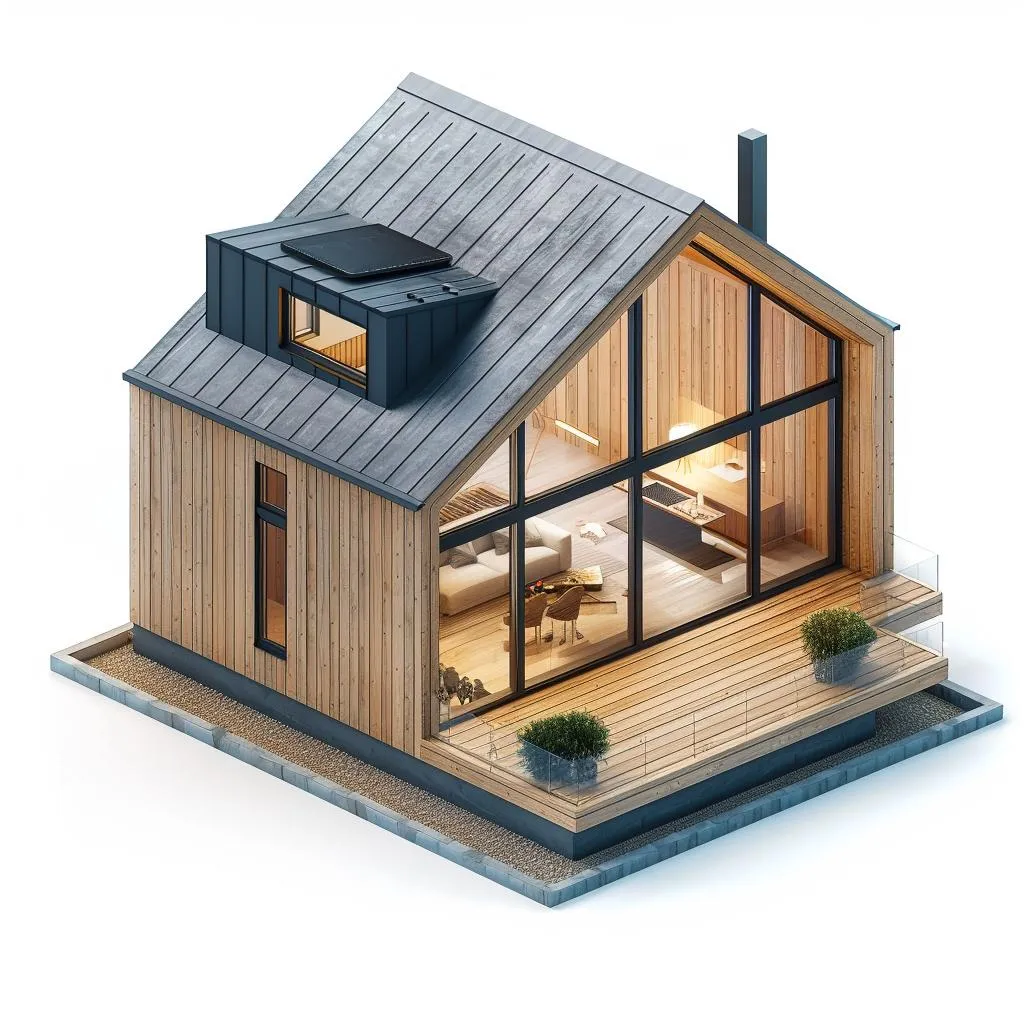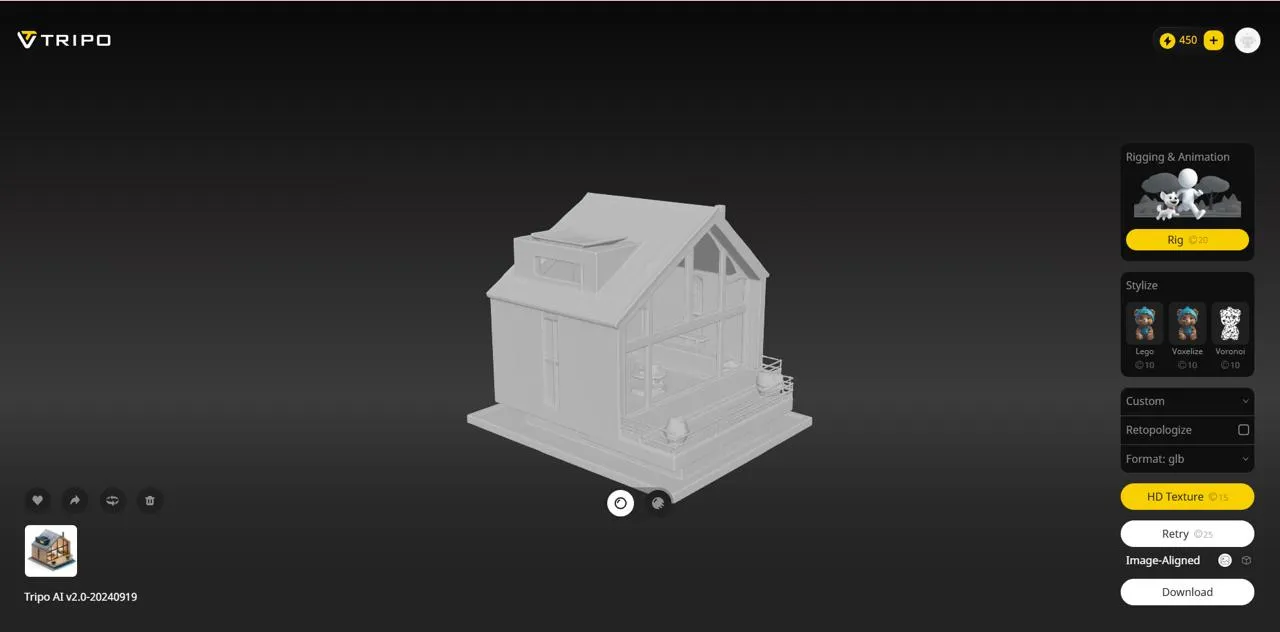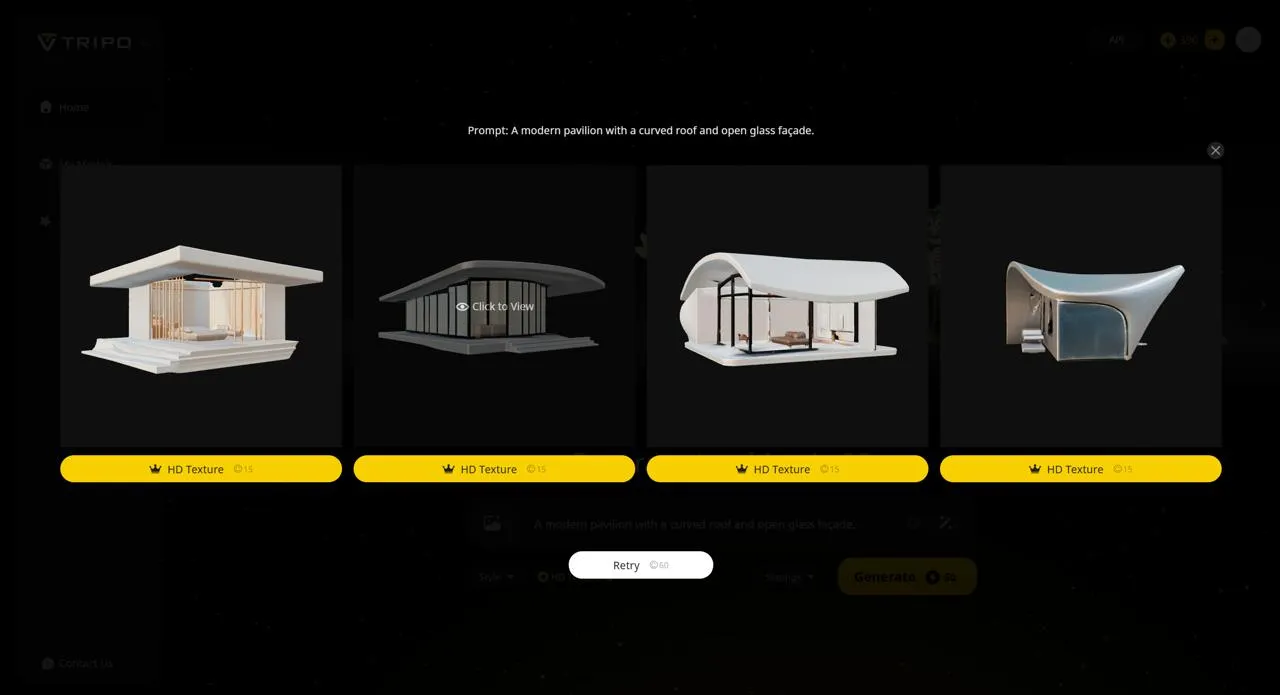
How Tripo AI Revolutionizes 3D Image Generation for Architects
"As part of our ongoing commitment to share industry insights, we’re excited to share this post by Hanine Salman Abi-Ali, a Senior digital Transformation Specialist at Dewan Architects & Engineers. We believe it brings valuable information for those working with 3D modeling technologies."——Tripo AI teams
Imagine transforming your conceptual sketches into detailed 3D models instantly.
Tripo AI is making this possible with its image to 3D and text to 3D capabilities, allowing for rapid visualization, texturing and material application.
In this article, you will see how Tripo AI stacks up for architectural workflows and why it’s worth considering for your design process.
What is Tripo AI?
Tripo AI is a credit based 3D generation tool that allows users to create 3D models from images or text prompts. It offers a subscription plan with both monthly and annual payment options, as well as an invite based credit earning system.
Key features:
- Image to 3D conversion for creating 3D models from reference images.
- Text to 3D for generating models from descriptions.
- Face limit control for optimizing model complexity.
- HD texture upgrades for high-quality material rendering.
- It also offers different stylize options like Lego Voxelize and Voronoi.
- Retopology tools to clean up models for better use in rendering software.
Why Architects Should Care
While Tripo AI is widely used in digital art and gaming, it also holds huge potential for architects. Here’s how:
- Rapid Conceptualization means that instead of manually modeling from scratch, architects can generate 3D forms quickly from rough sketches or AI generated images.
- For Furniture & Interior Design you can can use MidJourney images as input and convert them into tangible 3D furniture pieces.
- Material Experimentation is easily possible where Tripo AI applies texturing and shading, making it easier to visualize different finishes without labor intensive rendering.
- Streamlined Workflows mean that it provides clean, structured models that can be retopologized for easy use in Blender, Rhino, 3ds Max, or Revit.

Real World Architectural Use Cases
1. Image to 3D Workflow
I started by testing image based 3D model generation, feeding Tripo AI various complex objects and architectural elements. The results were surprisingly detailed:
- Multi image input support allows for better coverage of hidden angles.
- Processing time is efficient, generating 3D models in under a minute.
The geometry was clean, with good surface details, though some smoothing out was needed.

2. Text to 3D for Concept Models
Next, I tested text based model generation, inputting descriptions like: "A modern pavilion with a curved roof and open glass façade."
- Tripo AI generated four variations allowing for creative exploration.
- The quality was best suited for early stage ideation rather than precise construction ready models.

3. Materials & Texture Handling
The HD texture feature significantly improved realism by:
- Enhancing material sharpness and shading.
- Supporting PBR (Physically Based Rendering) materials, which makes integration into rendering software easy.
Why Tripo AI is a Game-Changer for 3D Modeling:
🔹 Speed and Efficiency: Tripo AI can transform images into 3D models in a matter of seconds, enabling rapid concept development and iteration.
🔹 Realistic Texturing: With high-definition textures and PBR support, Tripo AI helps bring models to life with realistic surface details and material finishes.
🔹 Perfect for Interior Design: Whether it's bringing MidJourney-inspired furniture to life or designing immersive spaces, Tripo AI excels in generating high-quality 3D environments.
🔹 User-Friendly: No advanced modeling skills required. Architects, designers, and developers can quickly generate 3D forms and visualizations with ease.
Areas for improvement:
🔸 Final Production Models: The geometry of some models may be dense, requiring additional cleanup for final production.
🔸 Architectural Precision: AI-generated forms may lack the exact dimensionality needed to meet specific site constraints or architectural requirements.
🔸 Realism in Faces and Detailing: Some models, particularly human figures, may need further refinement for more realistic proportions and detailing.
How to Integrate Tripo AI into Your Architectural Workflow
- Generate Concept Models: Use text-to-3D to brainstorm early design forms.
- Import into Blender/Revit/Rhino: Clean up the mesh and refine the geometry.
- Apply Material Testing: Experiment with Tripo’s PBR textures before rendering.
- Use for Interior Visualization: Convert MidJourney furniture designs into 3D assets.
Final Thoughts… Is Tripo AI Worth It for Architects?
If you’re looking for a fast, AI powered tool to generate architectural concepts, Tripo AI is absolutely worth trying.
While it won’t replace detailed 3D workflows, it can accelerate early stage ideation and 3D modeling, making it easier to explore different forms and textures before committing to complex modeling.
Try it today and see how it can enhance your architectural processes.
- Original article: Tripo AI for Architects Changes 3D Image Generation Forever
Explore More
- Pitcure to STL
- Free T Pose Character Model FBX
- Blender: How to Edit Mesh from 3D AI Modeling
- Photo to 3D AI
- AI 3D Model Generator